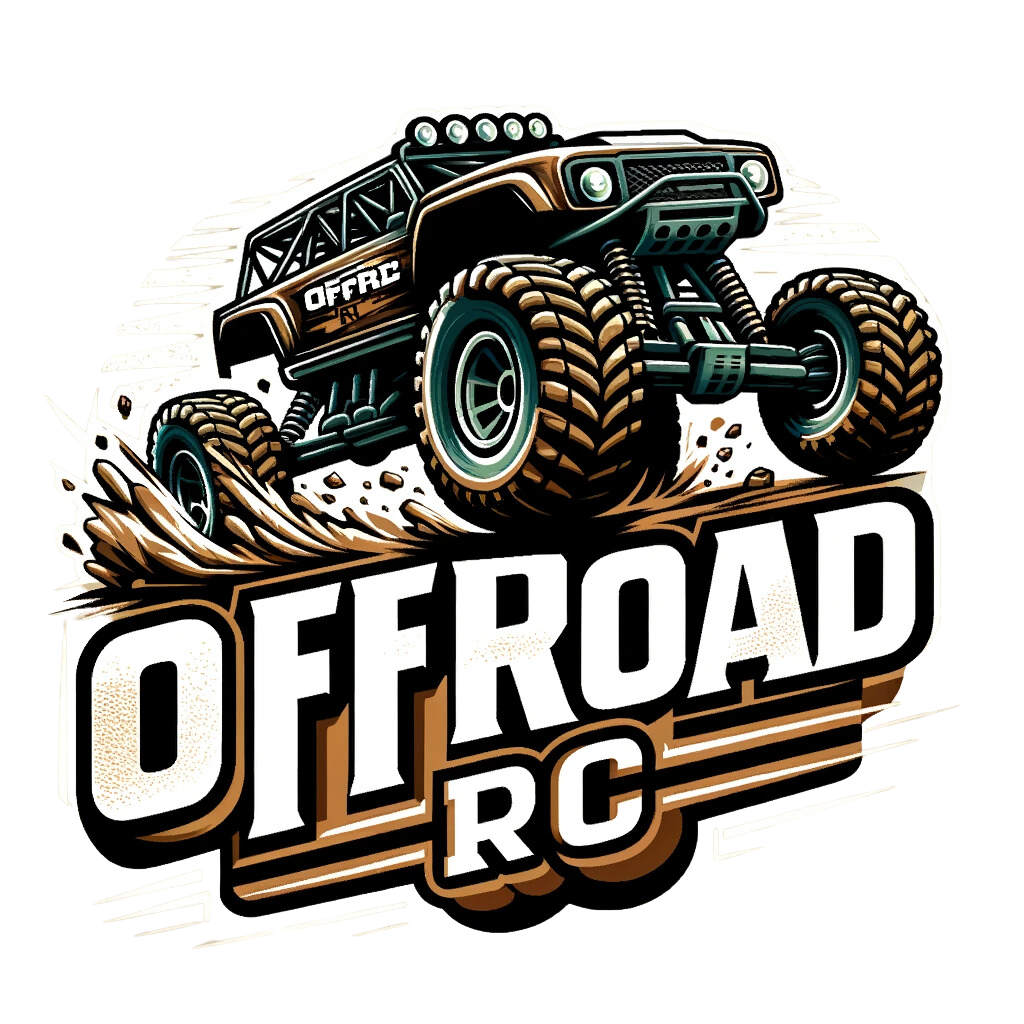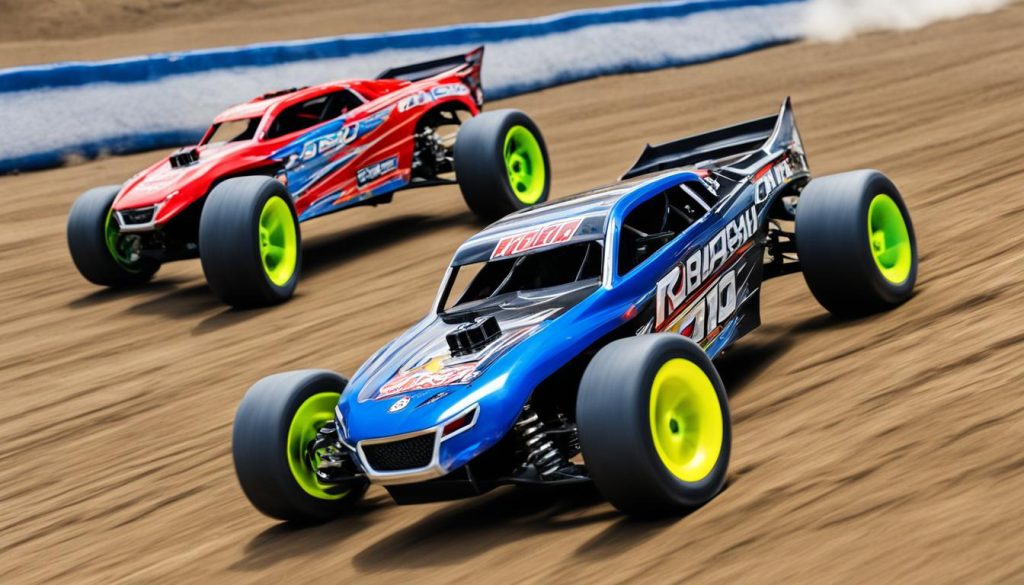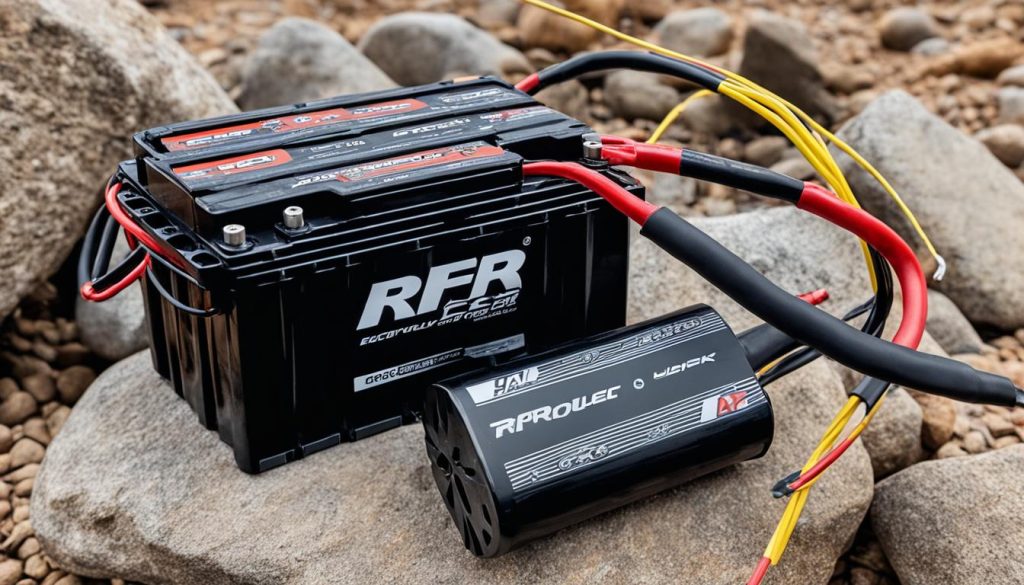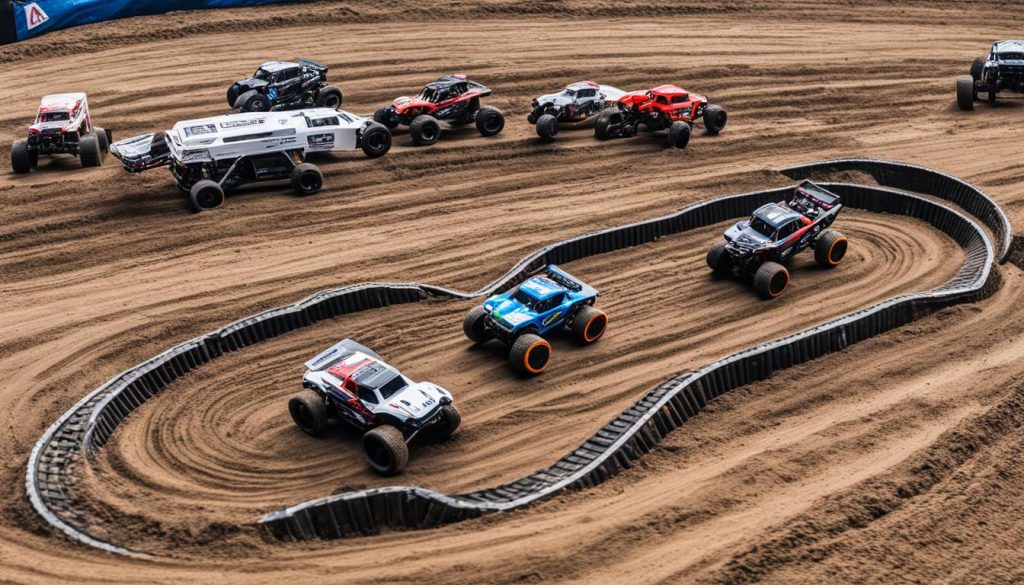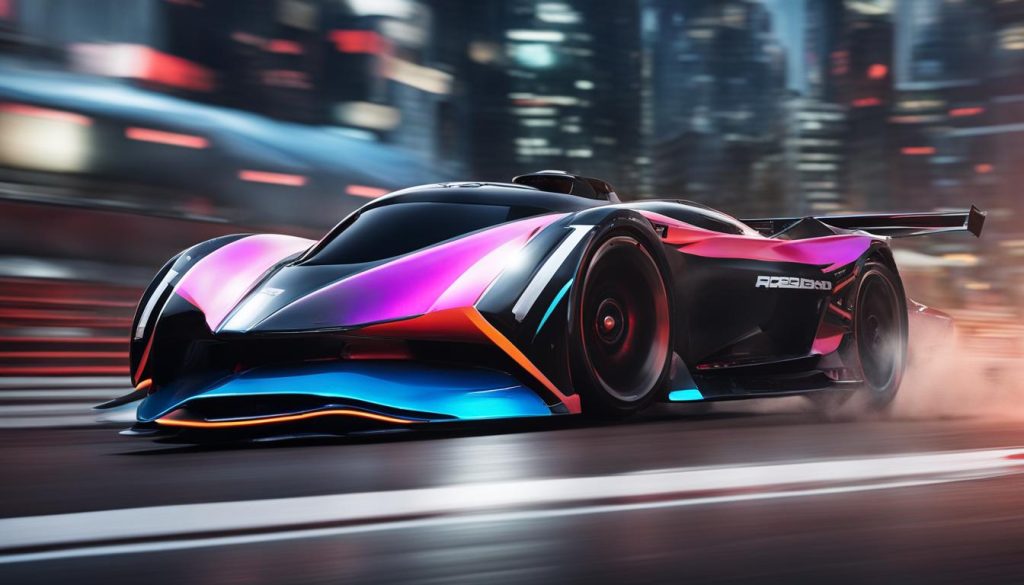When it comes to RC cars, speed is a major consideration for enthusiasts. The debate between electric and Nitro RC cars has been ongoing, with each type offering its own advantages and performance differences. In this article, we will delve into the comparison of speed and performance between these two types of vehicles.
Electric RC cars have gained popularity due to their ease of use and affordability. These cars are powered by rechargeable batteries, which provide consistent and reliable power. They are known for their quick acceleration and instant torque, making them ideal for short bursts of speed. Electric RC cars also tend to require less maintenance and are quieter during operation.
Nitro RC cars, on the other hand, offer a raw and exhilarating experience on the track. These cars are powered by a two-stroke internal combustion engine, similar to those found in real cars. Nitro RC cars are known for their high top speeds and the distinct sound of their engines. However, they require more maintenance, including tuning and refueling, and can be louder than electric RC cars.
Key Takeaways:
- Electric RC cars are known for their quick acceleration and instant torque.
- Nitro RC cars offer high top speeds and a thrilling experience on the track.
- Electric RC cars require less maintenance and are quieter during operation.
- Nitro RC cars require tuning and refueling, and can be louder than electric RC cars.
- The choice between electric and Nitro RC cars depends on personal preferences and specific needs.
The Big Three Questions
When it comes to choosing an RC car, there are three crucial questions you need to consider. These choices will have a significant impact on the performance and speed of your RC car. Let’s dive into these questions:
1. Nitro Power or Electric Power?
One of the first decisions you’ll need to make is whether to opt for nitro power or electric power for your RC car. Nitro-powered cars feature real engine power, providing a thrilling and high-speed experience on the track. On the other hand, electric RC cars offer affordability, quietness, easy maintenance, and lower maintenance requirements.
2. Kit or Ready-to-Run (RTR) Model?
Another critical choice is whether to go for an RC car kit or a ready-to-run (RTR) model. RC car kits allow you to build your car from scratch, providing a customized experience and a deeper understanding of the vehicle’s mechanics. RTR models, on the other hand, come pre-assembled and ready to hit the tracks without the hassle of assembly. Your choice between a kit or RTR model will impact both the performance and speed of your RC car.
3. On-Road or Off-Road Vehicle?
The third question to consider is whether you want an on-road or off-road RC car. On-road cars are designed for pavement use and excel in on-road performance, offering smooth and precise handling. Off-road RC cars, on the other hand, can handle various terrains, including dirt, grass, and rough surfaces, providing versatility for different track conditions. Your decision between on-road and off-road will determine the types of tracks you can race on and impact the overall speed and performance of your RC car.
By answering these three questions – choosing nitro power or electric power, deciding between a kit or RTR model, and selecting an on-road or off-road vehicle – you’ll be on your way to finding the perfect RC car that suits your preferences and delivers the speed and performance you desire.
Nitro vs Electric Power
When it comes to choosing the power source for your RC car, you have two main options: nitro power and electric power. Both options have their own set of advantages and considerations, which can significantly impact the performance and speed of your RC car. Let’s take a closer look at the key differences between nitro and electric power.
Nitro Power
Nitro-powered RC cars are known for their real engine power, providing an exhilarating and fast-paced experience on the track. These cars are powered by a nitro-fueled internal combustion engine, giving them an authentic and realistic feel. The sound and smell of a nitro RC car engine add to the excitement and realism of the driving experience.
Nitro-powered RC cars offer high speeds and acceleration, making them an excellent choice for those seeking a thrilling racing experience. These cars can reach impressive speeds, allowing you to push the limits of performance on the track. The roar of a nitro engine as it accelerates is sure to turn heads and generate excitement among RC enthusiasts.
Electric Power
On the other hand, electric RC cars are powered by rechargeable batteries. These cars have their own advantages, making them a popular choice among RC enthusiasts of all levels. One of the key advantages of electric RC cars is their affordability. Electric cars tend to have lower initial costs and require fewer ongoing expenses, such as fuel and maintenance.
Electric RC cars are also quieter compared to their nitro-powered counterparts. This makes them more suitable for indoor racing or for those who prefer a quieter RC experience. Additionally, electric cars are typically easier to maintain, as they don’t require fuel mixtures or complex engine tuning.
Another advantage of electric RC cars is their lower maintenance requirements. With fewer moving parts and no need for fuel combustion, electric cars tend to have less wear and tear and require fewer repairs. This means less time and money spent on maintenance and more time enjoying the RC car.
Performance Comparison
When it comes to performance, there are some differences between nitro and electric RC cars. Nitro-powered cars generally offer higher speeds and acceleration, making them ideal for racing and high-performance applications. Electric cars, while slightly slower in comparison, still provide impressive speed and performance, especially in the hands of skilled drivers.
To give you a better understanding of the performance differences, here’s a comparison of the key features between nitro and electric RC cars:
| Aspect | Nitro RC Cars | Electric RC Cars |
|---|---|---|
| Speed and Acceleration | High speeds and rapid acceleration | Impressive speed and acceleration |
| Sound | Authentic engine sound | Quieter operation |
| Maintenance | Requires more frequent maintenance | Easier and lower maintenance requirements |
| Affordability | Higher initial and ongoing costs | Lower initial and ongoing costs |
Ultimately, the choice between nitro and electric power comes down to personal preference and specific needs. If you enjoy the thrill of a real engine and want top speeds, nitro power may be the way to go. If affordability, quietness, and easier maintenance are more important to you, electric power is a great option. Consider your priorities and the type of RC experience you desire to make an informed decision.
Kit vs RTR
When it comes to building an RC car, you have two main options: RC car kits or ready-to-run (RTR) models. Each option has its advantages and can impact the speed and performance of your RC car.
RC Car Kits
RC car kits are perfect for those who enjoy the process of building and customizing their vehicles. With a kit, you have the opportunity to learn about the mechanics of the car and gain a deeper understanding of how it works. Building an RC car from a kit can be a rewarding experience, allowing you to personalize every aspect of the vehicle to your liking. While the assembly process may take time and effort, the end result is a unique RC car that you can truly call your own.
RTR Models
If you’re looking for a hassle-free experience and don’t want to deal with the complexities of assembly, ready-to-run models are the way to go. RTR RC cars come pre-assembled and are ready to hit the track right out of the box. This makes them ideal for beginners or those who prefer convenience. RTR models are designed to be user-friendly, allowing you to start enjoying your RC car immediately without any technical know-how or additional setup.
“RC car kits offer the opportunity for customization and a deeper understanding of the vehicle’s mechanics. On the other hand, RTR models are ideal for those who want a hassle-free experience and don’t want to deal with the assembly process.”
| RC Car Kits | RTR Models |
|---|---|
| Opportunity for customization | Ready to use out of the box |
| Deeper understanding of mechanics | No assembly required |
| Personalized end result | No technical knowledge required |
As you can see, there are performance differences between RC car kits and RTR models. The choice between the two depends on your personal preferences, level of expertise, and the amount of time you’re willing to invest in building and customizing your RC car.
Next, let’s explore another important factor when choosing an RC car: the difference between on-road and off-road vehicles.
On-Road vs Off-Road
When it comes to RC cars, there are two main categories to choose from: on-road and off-road. Each category offers unique benefits and performance characteristics that cater to different types of driving experiences. Whether you prefer racing on smooth pavement or conquering rough terrains, understanding the differences between on-road and off-road RC cars is crucial in making the right choice for your RC adventures.
On-Road RC Cars:
Designed specifically for pavement use, on-road RC cars excel in delivering high-speed performance on smooth surfaces. These cars feature low ground clearance and sleek designs to optimize aerodynamics, enabling them to achieve impressive speeds and handle sharp turns with precision. On-road RC cars are commonly used for competitive racing on tracks, where their superior handling and speed capabilities shine.
Off-Road RC Cars:
On the other hand, off-road RC cars are built to handle a variety of terrains, including dirt, gravel, grass, and even rocky surfaces. These cars feature high ground clearance, rugged tires with deep treads, and durable suspension systems to tackle rough and uneven surfaces with ease. Off-road RC cars are known for their versatility, as they can be driven on both off-road tracks and pavement, allowing for more diverse RC adventures.
Performance Comparison:
When it comes to performance comparison, both on-road and off-road RC cars offer unique advantages. Let’s take a closer look at the key performance factors:
| Performance Factor | On-Road RC Cars | Off-Road RC Cars |
|---|---|---|
| Speed | Excellent on-road performance, achieving high speeds on smooth surfaces. | Capable of handling various terrains, but typically with slightly lower top speeds compared to on-road RC cars. |
| Handling | Superior handling on smooth surfaces, making them ideal for precision racing. | Designed to handle rough terrains, offering stability and control over uneven surfaces. |
| Durability | Less impact on suspension and overall structure due to the smooth nature of on-road driving. | Built with rugged components to withstand the demands of off-road driving and potential jumps. |
| Versatility | Typically limited to on-road tracks and pavement, offering a more focused driving experience. | Can be driven on various terrains, providing more flexibility and diverse RC adventures. |
Ultimately, the choice between on-road and off-road RC cars depends on your personal preferences and the type of driving experience you seek. If you enjoy high-speed precision racing on smooth surfaces, on-road RC cars are the way to go. On the other hand, if you desire the versatility to conquer different terrains and explore off-road trails, off-road RC cars are the perfect choice. Whatever you decide, both options offer thrilling RC experiences that will bring excitement to your hobby.
Narrowing Down Your Choices
When it comes to choosing an RC car, there are several factors to consider that can help you make an informed decision. These factors include your RC car budget, the availability of parts and support at local shops, and the recommendations of friends who already have RC cars. Taking these aspects into account will ensure that you find the right RC car that fits your budget and provides a satisfying experience.
Your RC car budget plays a crucial role in determining the options available to you. Setting a budget upfront will help you narrow down your choices and focus on RC cars that are within your price range. Whether you’re looking for an entry-level model or a high-performance racing machine, there are options available for every budget.
Another important consideration is the availability of parts and support at local shops. Having easy access to spare parts and expert assistance when needed can save you time and frustration in the long run. Check whether there are RC car shops in your area that carry the brand and model you’re interested in, as well as provide reliable service and support.
Lastly, don’t underestimate the value of friends’ recommendations. If you have friends who are already RC car enthusiasts, they can offer valuable insights and firsthand experiences. They can share their recommendations based on their own RC car purchases, which can be helpful in guiding your decision-making process.
“My friend recommended the XYZ RC car, and it has exceeded my expectations in terms of durability and performance. I’m glad I took their advice!”
By considering your RC car budget, local shop availability, and friends’ recommendations, you can narrow down your choices and find the RC car that best suits your needs. Remember, finding the right RC car is not just about speed and performance; it’s also about the overall experience and enjoyment you’ll have with your new hobby.
| Factors to Consider | How it Influences Your Decision |
|---|---|
| RC car budget | Determines the range of options within your price range |
| Local shop availability | Ensures easy access to spare parts and support |
| Friends’ recommendations | Offers valuable insights and firsthand experiences |
With these factors in mind, you’ll be well-equipped to make a confident decision and embark on an exciting RC car journey.
Types of RC Cars
When it comes to RC cars, there is a wide range of options available, each designed for specific purposes and offering unique performance characteristics. Whether you’re a beginner looking for a mini RC car or an experienced hobbyist seeking a high-speed 4WD monster truck, there’s an RC car out there for you.
Popular Types of RC Cars
Here are some of the most popular types of RC cars:
- 4WD Touring Cars: These RC cars are designed for high-speed racing on paved tracks, offering exceptional handling and stability. They are ideal for competitive racing and provide thrilling speeds.
- 1/10-Scale 2WD Buggies: These buggies are lightweight and built for off-road racing. With their rear-wheel-drive configuration, they offer agility and quick acceleration on various terrains.
- 1/10-Scale 2WD Stadium Trucks: Stadium trucks are versatile RC vehicles that can handle both on-road and light off-road tracks. They are known for their durability and ability to withstand jumps and rough terrain.
- 1/8-Scale 4WD Buggies: These larger-scale buggies are designed for serious off-road racing. With their powerful 4WD systems and robust suspensions, they can handle the most challenging terrains and offer impressive speeds.
- 4WD Monster Trucks: Monster trucks are the kings of off-road RC racing. These massive, rugged vehicles feature large tires and powerful engines, allowing them to conquer any obstacle in their path.
- Mini RC Cars: Mini RC cars are compact and lightweight, making them perfect for indoor racing and small outdoor tracks. They may be small in size, but they still pack a punch in terms of speed and performance.
- Motorcycle RC Cars: These unique RC vehicles mimic the look and feel of motorcycles, offering an exciting and realistic racing experience. They are designed for both on-road and off-road use and provide impressive maneuverability.
- Dragsters: Dragsters are purpose-built for straight-line speed and acceleration. These specialized RC cars feature aerodynamic bodies and powerful engines, allowing them to achieve incredible speeds in a matter of seconds.
- Tanks and Haulers: For those interested in military-themed RC vehicles, tanks and haulers offer a different kind of excitement. These vehicles are typically slower but provide realistic controls and the ability to navigate various terrains.
Each type of RC car has its own unique speed capabilities, handling characteristics, and terrain suitability. Whether you prefer high-speed racing, off-road adventures, or realistic simulations, there’s an RC car type that will suit your preferences and deliver an exhilarating experience.
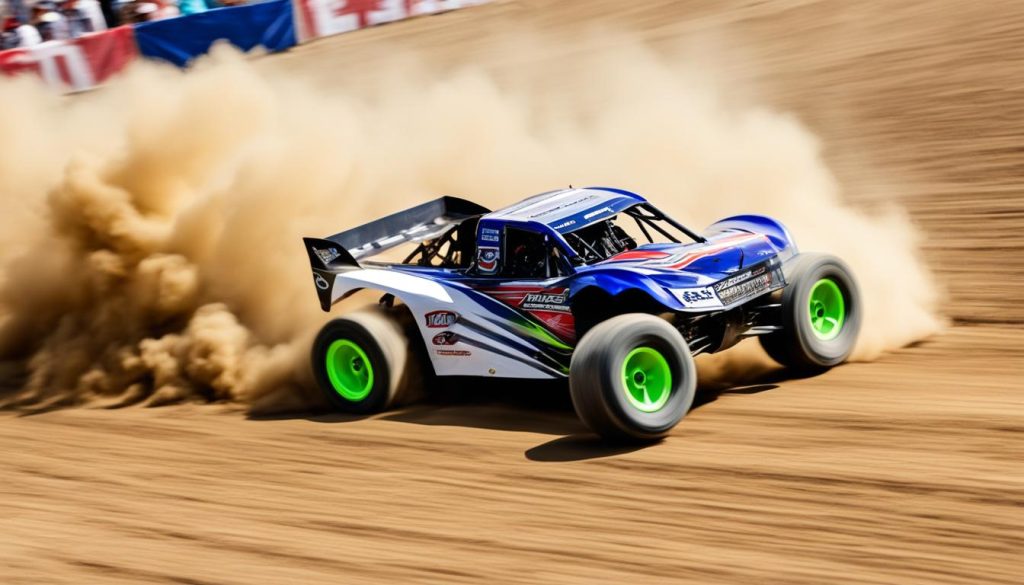
| Type of RC Car | Speed | Handling | Terrain Suitability |
|---|---|---|---|
| 4WD Touring Cars | High | Excellent | Paved tracks |
| 1/10-Scale 2WD Buggies | Fast | Agile | Off-road tracks |
| 1/10-Scale 2WD Stadium Trucks | Fast | Durable | On-road and light off-road |
| 1/8-Scale 4WD Buggies | High | Rugged | Off-road |
| 4WD Monster Trucks | Very high | Robust | Off-road |
| Mini RC Cars | Fast | Compact | Indoor and small outdoor tracks |
| Motorcycle RC Cars | High | Maneuverable | On-road and off-road |
| Dragsters | Extremely high | Aerodynamic | Straight-line racing |
| Tanks and Haulers | Varies | Realistic controls | Various terrains |
Increasing Speed of Nitro-Powered RC Cars
If you’re looking to amp up the speed of your nitro-powered RC car, there are several modifications you can make to optimize its performance. These modifications will help you unleash the true potential of your RC car on the track. Here are some strategies to consider:
1. Changing Clutch Bell and Spur Gear
One way to increase speed is by adjusting the gear ratio of your RC car. By changing the clutch bell and spur gear, you can fine-tune the power delivery to the wheels. Increasing the gear ratio will result in higher top speeds, while decreasing it will provide more acceleration. Experiment with different gear combinations to find the optimal setup for your car and track conditions.
2. Opening the Carb
The carburetor plays a crucial role in regulating the fuel-air mixture in your engine. By opening the carb, you can optimize the airflow, ensuring that the engine receives an adequate amount of fuel at higher speeds. This modification will enhance the engine’s performance and allow your RC car to reach higher speeds with greater ease.
3. Increasing Nitro Percentage
The nitro percentage in the fuel directly impacts the power output of your RC car’s engine. By increasing the nitro percentage, you can generate more power and achieve faster speeds on the track. However, it’s essential to note that increasing nitro percentage may require adjustments to the engine’s tuning and can affect its overall reliability. It’s recommended to gradually increase the nitro percentage and monitor the engine’s performance to prevent any potential damage.
4. Tuning the Tuned Pipe
The tuned pipe is a critical component of the exhaust system, responsible for optimizing the engine’s power delivery. By tuning the tuned pipe, you can fine-tune the engine’s performance and maximize its power output. This modification involves adjusting the length and diameter of the pipe to achieve optimal performance at higher speeds. Experimenting with different pipe configurations will help you find the sweet spot that boosts your RC car’s top speed.
Remember, these modifications require careful consideration and experimentation. It’s recommended to consult with experienced RC enthusiasts or seek guidance from professionals to ensure you make the right adjustments without risking damage to your RC car. With the right modifications and tuning, you can unlock the full speed potential of your nitro-powered RC car and enjoy thrilling high-speed races.
| Modification | Description |
|---|---|
| Changing Clutch Bell and Spur Gear | Adjust gear ratios to optimize power delivery |
| Opening the Carb | Enhance airflow for better engine performance |
| Increasing Nitro Percentage | Boost power output by increasing nitro percentage in the fuel |
| Tuning the Tuned Pipe | Optimize power delivery through adjustments to the tuned pipe |
Increasing Speed of Electric RC Cars
Electric RC cars are not only fun to drive but can also be modified to increase their speed. By making a few adjustments, you can unlock the full potential of your electric RC car and enjoy faster lap times on the track. Here are two effective methods to increase the speed of your electric RC car:
1. Increase Tire Size
One of the easiest ways to boost the speed of your electric RC car is by increasing the size of the tires. Larger tires effectively change the gear ratio of the vehicle, resulting in higher top speeds. When choosing larger tires, be mindful of the clearance between the tires and the body of the car to ensure they fit properly. However, keep in mind that larger tires may also impact the handling and maneuverability of the car.
2. Reduce Rolling Resistance
To maximize the speed of your electric RC car, it’s crucial to minimize rolling resistance. Rolling resistance refers to the friction between the tires and the surface of the track. By reducing this resistance, you can achieve faster speeds. Here are a few strategies to reduce rolling resistance:
- Use high-quality bearings: Upgrading to high-quality bearings can significantly reduce friction and improve the overall performance of your RC car.
- Ensure the brakes do not rub on the discs: Misaligned brakes can cause unnecessary friction, resulting in reduced speed. Regularly inspect and adjust the brakes to ensure they are not rubbing on the discs.
By implementing these modifications, you can enhance the speed and performance of your electric RC car, making your racing experience even more thrilling.
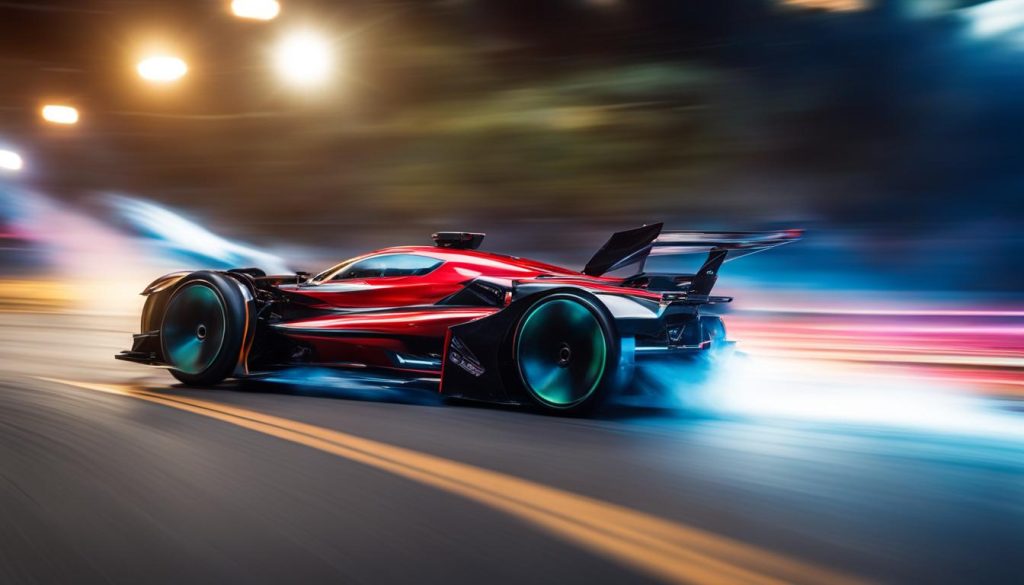
The Joy of Vintage RC Cars
For many RC enthusiasts, collecting and racing vintage RC cars brings immeasurable joy. These nostalgic RC cars, especially the models from the 80s and 90s like the legendary RC10 and Ultima, hold a special place in the hearts of collectors.
Fortunately, the RC community understands the enduring appeal of these vintage models, and manufacturers have responded by re-issuing these iconic cars. This allows both seasoned enthusiasts to relive the nostalgia and newcomers to experience the thrill of these classic RC cars for the first time.
Whether you were a fan of these vintage models back in the day or are discovering their charm now, re-issued RC cars offer a window into the past while retaining the performance and excitement of the originals. With improved technology and components, these re-issues give you the opportunity to enjoy the timeless design and experience the joy of racing these historic RC cars.
| Pros of Vintage RC Cars | Cons of Vintage RC Cars |
|---|---|
|
|
While vintage RC cars have their own charm, it’s important to consider both the pros and cons before embarking on your journey with these classic models. For true enthusiasts, the joy of owning and racing a vintage RC car outweighs the challenges they may present.
Conclusion
After exploring the performance differences between electric and Nitro RC cars, it is evident that both types have their own unique advantages. When it comes to speed and performance, both electric and Nitro RC cars can provide an exciting experience on the track. The choice between the two ultimately depends on personal preferences and specific needs.
If you’re looking for raw power and the thrilling sound of a real engine, Nitro RC cars are the way to go. These vehicles offer an adrenaline-filled experience and can reach impressive speeds. However, they require more maintenance and may be less affordable in the long run.
On the other hand, electric RC cars are more convenient and affordable. They provide quieter operation, easier maintenance, and generally lower upkeep costs. Electric RC cars may not offer the same level of raw power as Nitro vehicles, but they still deliver impressive speed and performance.
Ultimately, whether you choose electric or Nitro power, the joy of RC car racing comes from the excitement of watching your car speed around the track and the satisfaction of mastering its performance. So, explore both options, consider your preferences, and get ready to have an exhilarating time with your RC car!
FAQ
Are electric RC cars faster than Nitro RC cars?
The speed of an RC car depends on various factors, including the type of power it uses. Nitro-powered RC cars are known for their real engine power, which can provide a thrilling and fast-paced experience on the track. Electric RC cars have their own advantages, but their top speed may not match that of nitro-powered RC cars.
What are the performance differences between electric and Nitro RC cars?
Electric and Nitro RC cars differ in terms of power source, maintenance requirements, and performance characteristics. Nitro RC cars offer the excitement of a real engine and tend to have higher top speeds. Electric RC cars are more affordable, quieter, and easier to maintain, but their top speeds may not match those of nitro-powered models.
How do I choose between a kit and a ready-to-run (RTR) model?
The choice between a kit and an RTR RC car depends on your preferences and level of expertise. Kits allow for customization and a deeper understanding of the vehicle’s mechanics but require assembly. RTR models are ideal for those who want a hassle-free experience and don’t want to deal with the assembly process.
What is the difference between on-road and off-road RC cars?
On-road RC cars are specifically designed for pavement use and provide excellent performance on smooth surfaces. Off-road RC cars are versatile and can handle both off-road and on-road terrains, making them suitable for various types of tracks. The choice between on-road and off-road RC cars depends on the type of surface you plan to drive on.
How can I increase the speed of a nitro-powered RC car?
Modifying a nitro-powered RC car to increase speed can involve changing the gear ratios by adjusting the clutch bell and spur gear, optimizing airflow by opening the carburetor, increasing the percentage of nitro in the fuel, and tuning the tuned pipe to enhance engine performance.
How can I increase the speed of an electric RC car?
Increasing the speed of an electric RC car can be done by increasing the size of the tires, which effectively changes the gear ratio and can lead to higher top speeds. Reducing rolling resistance, such as using high-quality bearings and ensuring that the brakes do not rub on the discs, can also help improve speed.
Can I race vintage RC cars?
Yes, many RC enthusiasts find joy in collecting and racing vintage RC cars. Nostalgic models from the 80s and 90s, such as the RC10 and Ultima, hold a special place in the hearts of collectors. Re-issues of these vintage models have been made available, allowing enthusiasts to relive the nostalgia or experience these classic RC cars for the first time.
Which type of RC car should I choose?
The type of RC car you should choose depends on factors such as your budget, availability of parts and support at local shops, and recommendations from friends who already have RC cars. Consider your specific needs and preferences, and make an informed decision based on performance characteristics, maintenance requirements, and overall enjoyment.
